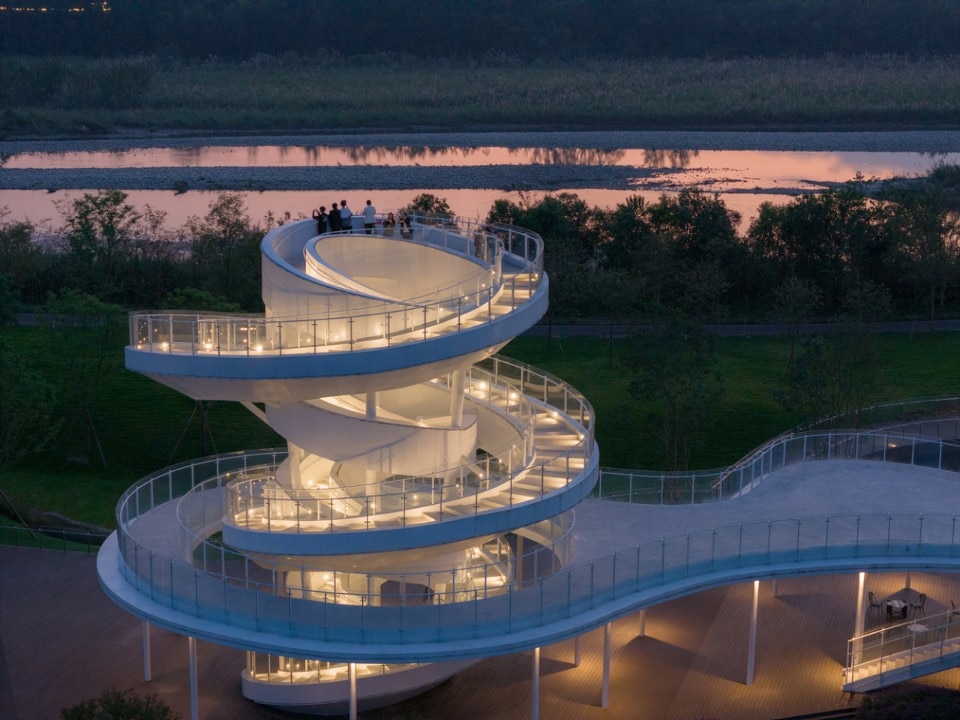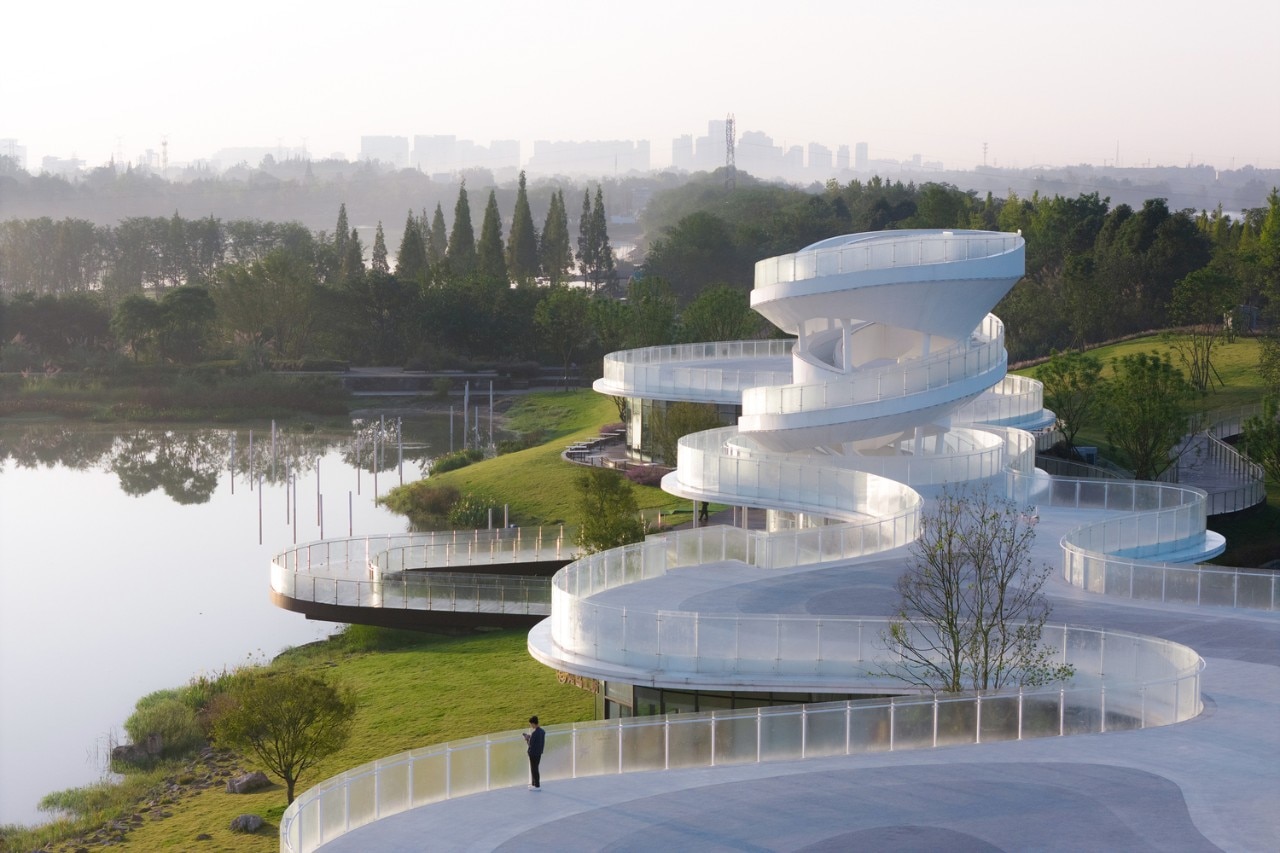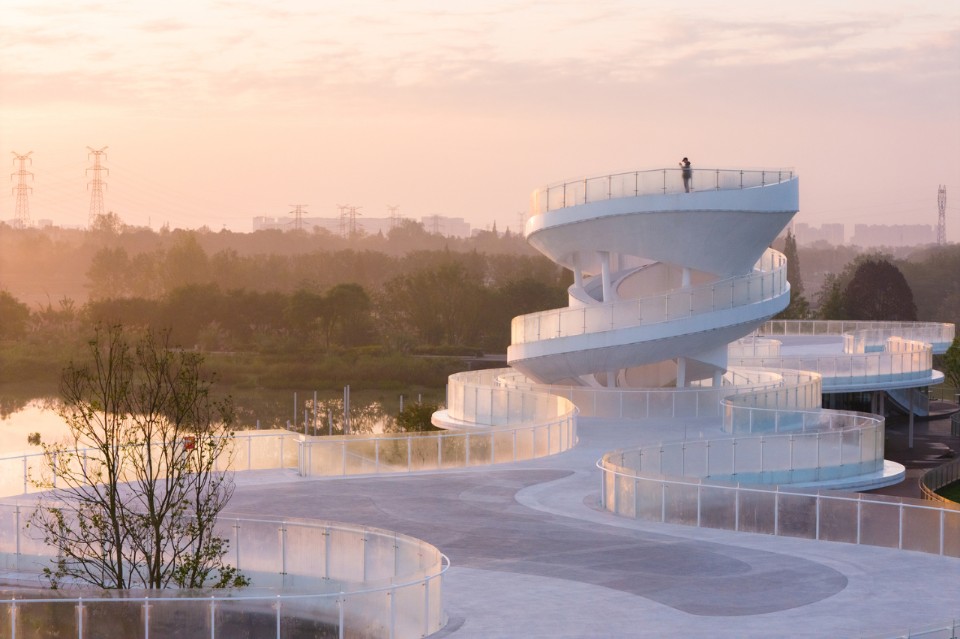The Lujiatan Wetland Park Commercial Service Center has just been completed in Chengdu's Wenjiang District. Designed by Chinese-American firm MUDA-Architects, the architecture interfaces with the park's lush landscape, generating an interesting interface between its organic form and the surrounding nature.
Wenjiang District, often referred to as the “City of Willows,” is rich in history as the cradle of the ancient Shu-Yufu Dynasty. Due to its advantageous location and natural resources, it has long been a convergence point of cultural and natural riches. Lujiatan Wetland Park is surrounded by the Jinma and Minjiang rivers and has become a popular destination for ecotourism.

Inspired by the rhythmic flow of rivers, the design team incorporated fluid, flowing forms into the project design. In this way, the architecture respects the ecological and cultural significance of the site while embracing a modern aesthetic that reflects Wenjiang's landscape. The design avoids direct symbolism or replication of traditional forms, instead abstracting natural motifs to create a contemporary architectural expression. This balance of lightness and ecological sensitivity ensures that the structure integrates fluidly with the wetland environment, creating a new landmark for Chengdu.
The architects were inspired by the Chinese garden pavilion, reinterpreting the relationship between roof and column using modern techniques. The flowing curves of the structure evoke the textures of the river, while the light roof clad in white metal panels and transparent glass facades create the impression of a building “floating on water.” The design departs from conventional layouts and employs a modular approach, reorganizing spatial elements into interconnected zones that encourage exploration. Streamlined pathways improve accessibility, connecting visitors with the surrounding landscape and promoting active engagement with the site.
The trampled canopy, an important element of the visitor experience, blends with the ground-level wooden platform, connecting the building to the wetland park. On the one hand, the platform extends toward the water as a cantilevered hydrophilic bridge, providing a close connection to nature. On the other, it connects to the Jinma River greenway, creating a harmonious transition between architecture and landscape. At the center of the complex, a double-helix observation tower becomes a focal point.





































